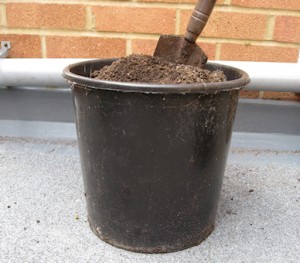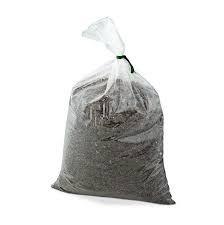But what is the most effective soil testing methodology?
 A. Properly collect soil
A. Properly collect soil
To get good results back from the lab, follow these steps.
- First, get a clean bucket.
- Collect samples of soil only (excluding roots, small twigs, and stones) from multiple points on the site. It’s important to get below the turf and to only take soil from the areas that you’re going to be using. Make sure there aren’t too many contaminants that have migrated into your sample.
- It’s also possible to use a screening or filter system to get some of the bigger products. Note that contaminants may be small and they can sometimes go through the screen.
- The remainder of screen material needs to be put into one or two 1-litre bags and made available to your laboratory.

B. Review the Soil Stats
Legitimate manufactured and engineered soil providers should have soil analyses available; this is something consumers should definitely pay attention to. These analyses will be specific to the type of soil you want to use, whether that be, for example, in your turf grass or planting beds. Don’t accept a soil analysis for a manufactured soil that is not for the application you are using the soil for.
And finally, the analyses should also be fairly recent—at least within 6 to 8 weeks of time delivery. If it not recent then it negates the fact that there is a soil analysis at all. When someone provides you with an older soil analysis it doesn’t tell you what has happened to the soil from the time the soil was tested to when it was sold and delivered to your project. There are numerous things that could have been done and there is no guarantee that it is the correct type of soil you need.
Contact Denbow’s soil expert team today to find out more about the line up of engineered soils we offer.


 A. Properly collect soil
A. Properly collect soil


